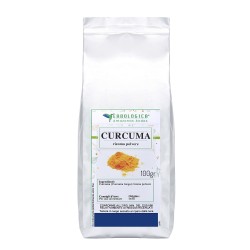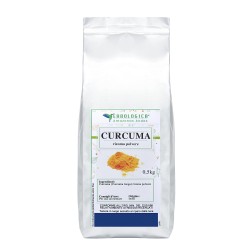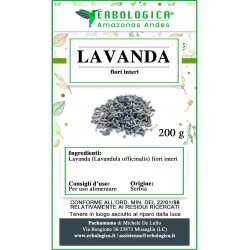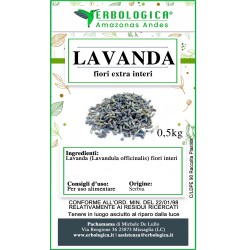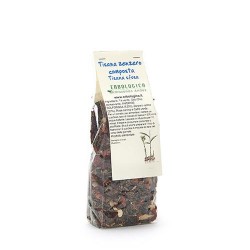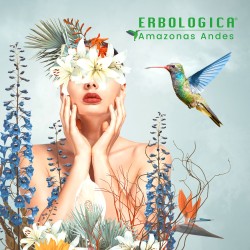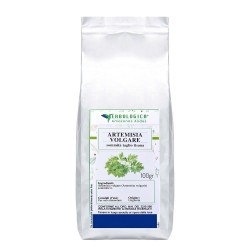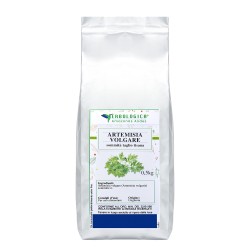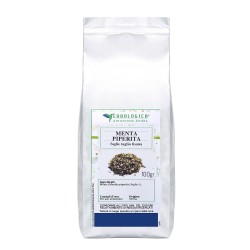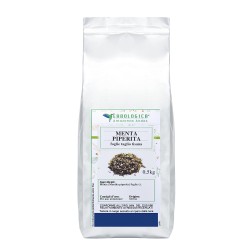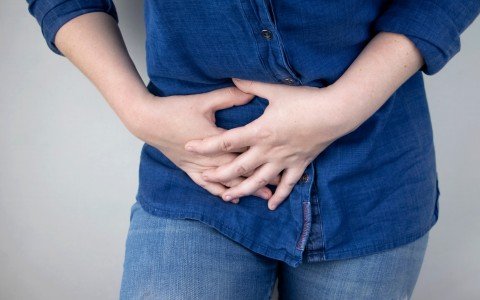
Introduzione all'endometriosi e ai suoi sintomi
L'endometriosi è una patologia che colpisce milioni di donne in tutto il mondo.
È una condizione in cui il tessuto che riveste l'utero cresce al di fuori di esso.
Questo può causare forti dolori e fastidi, soprattutto durante le mestruazioni.
Altri sintomi dell'endometriosi sono mestruazioni abbondanti, movimenti intestinali o minzione dolorosi, infertilità e affaticamento.
Sebbene esistano diversi trattamenti convenzionali per l'endometriosi, come la terapia ormonale e la chirurgia, molte donne si rivolgono a rimedi naturali per gestire i sintomi.
Tra questi rimedi, le piante medicinali hanno guadagnato popolarità per il loro potenziale di alleviare il dolore e l'infiammazione associati all'endometriosi.
In questo articolo esploreremo le 6 principali piante medicinali che hanno dimostrato di essere efficaci nell'alleviare i sintomi dell'endometriosi.
I benefici dell'uso delle piante medicinali per l'endometriosi
Le piante medicinali sono utilizzate da secoli per le loro proprietà terapeutiche.
Contengono composti che possono aiutare a ridurre l'infiammazione, ad alleviare il dolore e a bilanciare gli ormoni che possono essere alterati nell'endometriosi.
A differenza dei trattamenti convenzionali, le piante medicinali sono generalmente sicure e hanno meno effetti collaterali.
Inoltre, le piante medicinali possono essere utilizzate in varie forme, tra cui tè, tinture e integratori, il che le rende facili da incorporare nella routine quotidiana.
Sebbene le piante medicinali possano essere utilizzate come terapia complementare, è essenziale consultare un medico prima di iniziare qualsiasi nuovo trattamento.
Le 6 principali piante medicinali per l'endometriosi: zenzero, curcuma, camomilla, lavanda e menta piperita.
Zenzero
Lo zenzero ha proprietà antinfiammatorie che possono contribuire ad alleviare il dolore associato all'endometriosi.
Ha anche un effetto riscaldante che può migliorare l'afflusso di sangue all'utero, riducendo i crampi e il disagio.
Lo zenzero può essere consumato come tè, aggiunto ai pasti o assunto come integratore.
La curcuma
E una spezia che contiene curcumina, un composto dalle potenti proprietà antinfiammatorie.
Alcuni studi hanno dimostrato che la curcumina può contribuire a ridurre il dolore e l'infiammazione associati all'endometriosi.
La curcuma può essere consumata come spezia, aggiunta ai pasti o assunta come integratore.
Camomilla
La camomilla è un'erba con proprietà antinfiammatorie e antispasmodiche.
Il composto attivo chiamato crisina contenuto in questa pianta aiuta a ridurre la crescita anomala delle cellule endometriali.
Allo stesso modo, la camomilla ha composti attivi che aiutano a ridurre i sintomi della sindrome premestruale.
Può essere consumata come infuso, aggiunta ai pasti o assunta come integratore.
Lavanda
La lavanda è un'erba dalle proprietà calmanti che può aiutare a ridurre lo stress e l'ansia associati all'endometriosi.
Può anche contribuire ad alleviare il dolore e a migliorare la qualità del sonno.
Può essere utilizzata come olio essenziale, aggiunta ai bagni o consumata come infuso.
Artemisia
E molto utilizzata nella medicina tradizionale perché considerata un'erba utile per i disturbi ginecologici, come la dismenorrea e l'infertilità, tipici dell'endometriosi.
L'artemisia può generalmente essere utilizzata in tinture, compresse e tè.
Menta piperita
La menta piperita è un'erba con proprietà antispasmodiche che può aiutare ad alleviare il dolore e i crampi associati all'endometriosi.
Può anche contribuire a ridurre la nausea e il gonfiore.
La menta piperita può essere consumata come tè, aggiunta ai pasti o assunta come integratore.
Come preparare e utilizzare le piante medicinali per alleviare l'endometriosi
Le piante medicinali possono essere utilizzate in varie forme, tra cui tè, tinture e integratori.
Per preparare un tè, aggiungere un cucchiaino di erba essiccata o una bustina in una tazza di acqua bollente e lasciare in infusione per 5-10 minuti.
Le tinture possono essere aggiunte all'acqua o al succo di frutta e assunte secondo le indicazioni. Gli integratori devono essere assunti secondo le indicazioni del medico.
È essenziale utilizzare piante medicinali di alta qualità e seguire il dosaggio raccomandato.
È inoltre essenziale consultare un operatore sanitario prima di iniziare qualsiasi nuovo trattamento, soprattutto se si stanno assumendo farmaci o si hanno altre condizioni di salute.
Altri rimedi naturali per l'endometriosi
Oltre alle piante medicinali, esistono altri rimedi naturali che possono aiutare a gestire i sintomi dell'endometriosi.
Questi includono:
Agopuntura
Una terapia complementare che prevede l'inserimento di aghi in punti specifici del corpo per ridurre il dolore e migliorare la salute generale.
Yoga
Una pratica mente-corpo che può aiutare a ridurre lo stress e l'ansia e a migliorare la flessibilità e la forza.
Meditazione
Pratica che prevede la concentrazione della mente per raggiungere uno stato di calma e rilassamento.
Terapia del calore
L'applicazione di calore all'addome o alla parte bassa della schiena può aiutare a ridurre i crampi e il dolore.
Precauzioni ed effetti collaterali dell'uso di piante medicinali per l'endometriosi
Sebbene le piante medicinali siano generalmente sicure, in alcune persone possono causare effetti collaterali.
Questi possono includere reazioni allergiche, problemi digestivi e interazioni con i farmaci.
È essenziale utilizzare le piante medicinali secondo le indicazioni e consultare un operatore sanitario prima di iniziare un nuovo trattamento.
È inoltre importante notare che le piante medicinali non devono essere utilizzate come sostituto dei trattamenti convenzionali per l'endometriosi.
Sebbene possano essere utilizzate come terapia complementare, devono essere impiegate insieme ad altri trattamenti, come la terapia ormonale o la chirurgia, secondo le indicazioni del medico.
Endometriosi e dieta - Cibi da mangiare e da evitare
La dieta può avere un ruolo nella gestione dei sintomi dell'endometriosi.
Alcuni alimenti possono contribuire a ridurre l'infiammazione e a bilanciare gli ormoni, mentre altri possono esacerbare i sintomi.
Gli alimenti da includere nella dieta per l'endometriosi sono:
Frutta e verdura
Sono ricchi di antiossidanti e fibre, che possono contribuire a ridurre l'infiammazione e a migliorare la digestione.
Cereali integrali
Sono ricchi di fibre e possono contribuire a migliorare la digestione e ad equilibrare gli ormoni.
Proteine magre
Come pollo, pesce e tofu, possono contribuire a fornire nutrienti essenziali limitando i grassi saturi.
Gli alimenti da evitare sono
Alimenti trasformati
Sono ricchi di additivi e conservanti che possono aggravare l'infiammazione e gli squilibri ormonali.
Grassi saturi
Presenti nella carne rossa e nei latticini, possono aumentare l'infiammazione e aggravare i sintomi.
Caffeina e alcol
Possono alterare l'equilibrio ormonale e aggravare i sintomi.
Cambiamenti nello stile di vita per gestire i sintomi dell'endometriosi
Oltre alla dieta e ai rimedi naturali, alcuni cambiamenti nello stile di vita possono aiutare a gestire i sintomi dell'endometriosi.
Questi includono:
Esercizio fisico regolare
Può aiutare a ridurre lo stress e l'ansia e a migliorare la salute generale.
Gestione dello stress
Come la meditazione, lo yoga o la respirazione profonda, possono contribuire a ridurre lo stress e a migliorare la salute generale.
Sonno di qualità
Dormire a sufficienza può contribuire a ridurre il dolore e a migliorare la salute generale.
Consultare un medico e integrare le piante medicinali
Sebbene le piante medicinali possano essere uno strumento utile per gestire i sintomi dell'endometriosi, è essenziale consultare un operatore sanitario prima di iniziare qualsiasi nuovo trattamento.
Un operatore sanitario può aiutare a determinare il piano di trattamento migliore per le vostre esigenze specifiche, compreso l'uso di piante medicinali.
È inoltre importante notare che, sebbene le piante medicinali possano essere efficaci nell'alleviare il dolore e l'infiammazione associati all'endometriosi, non devono essere utilizzate come sostituto dei trattamenti convenzionali.
Le piante medicinali devono essere utilizzate come terapia complementare in associazione ad altri trattamenti, secondo le indicazioni di un operatore sanitario.
Conclusioni
L'endometriosi può essere una condizione difficile da gestire, ma i rimedi naturali possono offrire un certo sollievo.
Piante medicinali come lo zenzero, la curcuma, la camomilla, la lavanda e la menta piperita hanno dimostrato di essere efficaci nell'alleviare il dolore e l'infiammazione associati all'endometriosi.
Oltre alle piante medicinali, anche altri rimedi naturali come l'agopuntura, lo yoga e la terapia del calore possono aiutare a gestire i sintomi.
È fondamentale consultare un operatore sanitario prima di iniziare qualsiasi nuovo trattamento, compreso l'uso di piante medicinali.
Un operatore sanitario può aiutare a determinare il piano di trattamento migliore per le vostre esigenze specifiche, compreso l'uso di piante medicinali come terapia complementare.
Con il giusto piano di trattamento, le donne affette da endometriosi possono gestire i loro sintomi e migliorare la loro qualità di vita.


